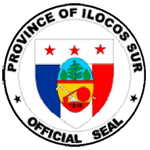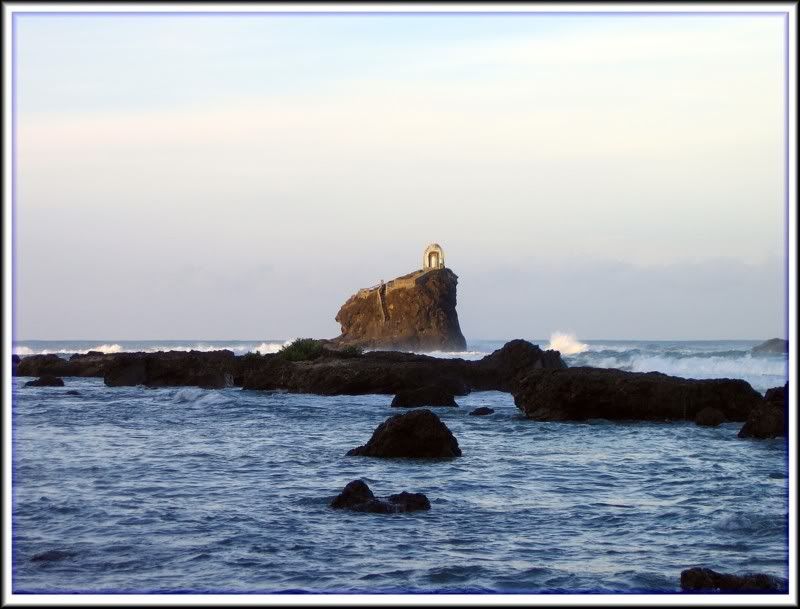
The Ilocano or Ilokano people are the third largest Filipino ethnolinguistic group. Aside from being referred to as Ilocanos, from "i"-from, and "looc"-bay, they also refer to themselves as Samtoy, from the Ilocano phrase "sao mi ditoy", meaning 'our language here.' The word "Ilocano" came from the word "Iloco" or "Yloco."
Area
Originally indigenous to the narrow coastal strip of northwestern Luzon, the migration of Ilocanos has been great. To this day, the Ilocanos are the dominant ethnic group in Northern Luzon, and their language, the linguæ francæ of the region. The Ilocanos are the majority in the provinces of Ilocos Norte, Ilocos Sur, Abra, La Union, Apayao, Cagayan, Isabela, Nueva Vizcaya, Quirino, Pangasinan, and Tarlac, and form a significant proportion of the populations of the provinces of Nueva Ecija, Aurora, Zambales, Benguet, Batanes, Ifugao, Kalinga, and Mountain Province. Further government-sponsored migrations have led to the resettlement of Ilocanos to Mindanao, particularly to the provinces of South Cotabato and Sultan Kudarat. There are also an important Ilocano communities in Manila, and the world over.
Demographics
Ilocanos number about 9,136,000. The Ilocanos are primarily of Austronesian stock, the same as with the rest of the Filipinos. Some are dark-skinned with large round eyes due to Aeta admixture. Others are fair-skinned and have almond eyes, owing to Chinese admixtures. Their homeland is the closest region in the Philippines to China. Many fair-skinned Ilocanos also have Spanish descent and other Ilocanos are city settlers having Indian and Arab blood. Few Ilocanos living in the Cordilleras also do have some Cordillerano blood. Ilocanos speak the Ilokano language (also called Iloko language), which is part of the Northern Philippine subgroup of the Malayo-Polynesian family of languages. They also speak Cebuano (in Mindanao), Tagalog, and English as second languages. Most Ilocanos are Roman Catholics, while a significant number belong to the Aglipayan Church (which originated in Ilocos Norte).
History
The Austronesian ancestors of the present-day Ilocanos came to the Philippines through bilogs, or outrigger boats during the Iron Age.
Spanish era
In 1572, when the Spanish conquistador Juan de Salcedo conquered the Ilocanos, he described them as being more barbarous than the Tagalogs. During the Spanish Colonial Era, the Ilocanos were one of the first ethnic groups to revolt against the Spaniards. The first Ilocano revolt occurred during 1661, when the Ilocanos proclaimed Pedro Almazan as their king. Almazan was executed by the Spaniards after the kingdom was dissolved. Diego Silang and his wife Gabriela Silang declared independence of Free Ilocos on 1762-1764 during the British occupation of Manila. The said republic was dissolved on September 20, 1763 through the execution of Silang and his Ilocano associates. During the American Colonial Period and up to the Independence Years, leaders encouraged the Ilocanos to resettle in Mindanao. On 1965, Ferdinand Marcos was the second Ilocano to be elected president of the Philippines. Under his presidency, thousands of Ilocanos benefited from his land reforms.
Present
The mounting population pressure due to the substantial population density during the mid-1800s caused the migration of the Ilocanos out of their historic homeland. By 1903, more than 290,000 Ilocanos migrated to Central Luzon, Cagayan Valley and Manila. More than 180,000 moved to Pangasinan, Tarlac, and Nueva Ecija. Almost 50,000 moved to Cagayan Valley; half of them resided in Isabela. Around 47,000 lived in Zambales.
The Ilocano Diaspora continued in 1906 when Ilocanos started to migrate to Hawaii and California. Ilocanos composed the largest number of expatriates in the United States, though most are bilingual with Tagalog. There is a significant Ilocano community in Hawaii, in which they make up more than 85% of the Filipino population.[1]
Later migrations brought Ilocanos to the Cordilleras, Aurora, Mindoro, Palawan, and Mindanao provinces of Sultan Kudarat, North Cotabato, and South Cotabato.
Culture
They are characterized as being hardworking and frugal, and they engage primarily in farming and fishing. The Ilocano culture represents very simple, sometimes spartan day-to-day living, focusing mostly on work and productivity, spending only on necessities and not on so much on ostentatious material possessions. Ilocanos also exemplify a great degree of respect and humility in their everyday dealings, much similar to their Tagalog counterparts.
Food
Pinakbet, one of the staples of the Ilocano diet.Ilocanos boast of a somewhat healthy diet heavy in boiled or steamed vegetables and freshwater fish, but are particularly fond of dishes flavored with bagoong, fermented fish that is often used instead of salt. Ilocanos often season boiled vegetables with bagoong monamon (fermented anchovy paste) to produce pinakbet. Local specialties include the soft white larvae of ants, and "jumping salad" of tiny, live shrimp.
Literature
The greatest Ilokano literary work written in Iloko is the Biag ni Lam-ang (the Life of Lam-Ang), an epic about the fantastic life and escapades of an Ilokano hero named Lam-ang.
Aside from 'Lam-Ang', the Ilocanos rank only second to Tagalog when it comes to literature. Ilocanos are also known for their beautiful folk songs, which are better preserved than those of the Tagalogs.
Notable Ilocanos
Elpidio Quirino, 6th President of the Philippines (1948–1953).
Ramon Magsaysay, 7th President of the Philippines (1953-1957).
Ferdinand Marcos, 10th President of the Philippines (1965–1986).
Fidel Ramos, 12th President of the Philippines (1992-1998).
Leona Florentino, famous woman poet.
Jose Burgos, Filipino priest and martyr during Spanish times.
Gregorio Aglipay, founder of the Aglipayan Church.
Josefa Llanes Escoda, women's rights activist, founder of the Girl Scouts of the Philippines.
Gloria Macapagal Arroyo – Filipino president, former secretary of Department of Social Welfare and Development, and former senator. Her mother is an Ilokano from Binalonan, Pangasinan.
Fabian Ver, former General and Chief of the Armed Forces of the Philippines.
Diego Silang - leader, revolutionist.
Gabriela Silang - wife of Diego,revolutionist.
Carlos P. Romulo - famous statesman and former President of UN Assembly.
Juan Luna - famous Filipino painter,older brother of Antonio.
General Artemio Ricarte - first Philippine Army General.
General Antonio Luna - educated abroad, most brilliant and most abled General during Aguinaldo's era.
Lt. Gen. Edward Soriano - first Fil-Am General of the US Army (ret).
Maj. Gen. Antonio Taguba - second Fil-Am General of the US Army.
Danny Inosanto - Martial Artist, Bruce Lee's assistant.
Robert "Bobby" Jaworski - famous PBA player.
Jejomar Binay - Politician, Makati Mayor.
Americans of Ilocano ancestry
Carlos Bulosan, writer from Binalonan, Pangasinan.
Ben Cayetano, 5th Governor of Hawaii (1994-2002).
Brian Viloria, light flyweight boxing champion.
Benny Agbayani, NY baseball player.
Brie Galicinao – Head Coach-Softball UC Santa Barbara, Princeton University Grad
David Bunevacz - Athlete




